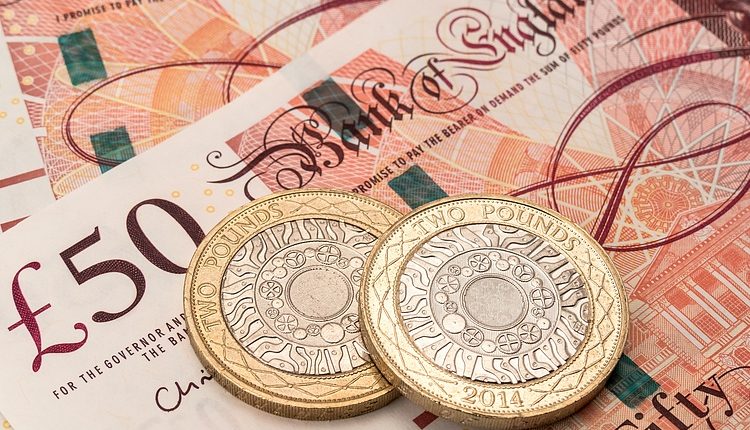- Pound Sterling eyes more downside on jittery market mood.
- A sudden policy-tightening pause by the BoE highlights a poor economic outlook.
- Investors await the UK’s Q2 GDP data for further guidance.
The Pound Sterling (GBP) extends its five-day losing spell as investors foresee the United Kingdom economy shifting into a recession due to deteriorating labor market conditions and a poor demand outlook. The GBP/USD pair is expected to deliver more losses as a pause in the rate-tightening cycle by the Bank of England (BoE) would elevate consumer inflation expectations.
BoE’s unexpected pause in its historically aggressive rate cycle has not only highlighted policymakers’ concern about the UK’s economic turmoil, but it has also raised uncertainty over the inflation outlook. Britain’s energy prices have been propelled by the global oil rally and are set to make inflation hotter again. A situation of high inflation and weak labor demand may trigger a stagflation risk ahead.
Daily Digest Market Movers: Pound Sterling drops as risk-off impulse intensifies
- Pound Sterling faces the wrath of a risk-off market mood as investors remain worried about the global economy due to deepening risks of higher interest rates.
- The market mood remains jittery as investors see the global economy struggling to absorb the consequences of restrictive monetary policy by central bankers.
- The consequences of higher interest rates on the UK economy are impacting labor market conditions and economic activities.
- UK employers laid off workers in the past two months as firms shifted focus to controlling costs due to the deteriorating demand environment.
- Though demand for labor has fallen, wage growth remains strong enough that the inflation outlook remains stubborn.
- Like the contracting UK Manufacturing PMI, the UK Services PMI slipped below the 50.0 threshold for the second time in a row. This indicates that households’ real income is being squeezed due to higher inflation and a recovery in gasoline prices.
- Despite strong wage growth and a stubborn consumer inflation outlook, the BoE decided to pause the policy-tightening spell last week. This indicates that BoE policymakers are more worried about upside risks to economic turmoil rather than persistent inflation.
- The Pound Sterling is on investors’ selling list due to expectations that the BoE is done hiking interest rates. Contrary to that, the US Dollar has remained resilient after a pause in the policy-tightening spell by the Federal Reserve (Fed).
- A pause in Fed tightening is due to falling inflation and strong economic prospects. In the US economy, labor demand is strong, consumer spending is robust, and wage growth is steady.
- Going forward, investors will focus on the UK’s April-June quarter Gross Domestic Product (GDP) data, which will be published on Friday. Quarterly and annualized GDP data are foreseen to expand at a steady pace of 0.2% and 0.4%, respectively.
- The US Dollar Index (DXY) trades near a fresh 10-month high around 106.30 as Fed policymakers support further policy-tightening to ensure price stability.
- As the US economy has been performing well in comparison with other G7 economies, inflationary pressures in excess of the desired rate of 2% will not fade easily. This has forced Fed policymakers to maintain a hawkish stance on the interest rate outlook.
- The US Dollar struggles to extend upside despite upbeat Durable Goods Orders data for August. New Orders grew at a nominal pace of 0.2% while investors anticipated a contraction of 0.5%. In July, the economic data contracted significantly by 5.6%.
Technical Analysis: Pound Sterling turns choppy near six-month low
Pound Sterling reports a bearish closing for the fifth time in a row. The GBP/USD pair continued its losing spell on Wednesday after slipping below the crucial support of 1.2152. The Cable refreshes a six-month low at 1.2135 and is expected to extend the downside toward the round-level support of 1.2100. A bear cross, represented by the 20 and 200-day Exponential Moving Averages (EMAs), warrants more weakness ahead. Momentum oscillators have reached oversold levels.
BoE FAQs
The Bank of England (BoE) decides monetary policy for the United Kingdom. Its primary goal is to achieve ‘price stability’, or a steady inflation rate of 2%. Its tool for achieving this is via the adjustment of base lending rates. The BoE sets the rate at which it lends to commercial banks and banks lend to each other, determining the level of interest rates in the economy overall. This also impacts the value of the Pound Sterling (GBP).
When inflation is above the Bank of England’s target it responds by raising interest rates, making it more expensive for people and businesses to access credit. This is positive for the Pound Sterling because higher interest rates make the UK a more attractive place for global investors to park their money. When inflation falls below target, it is a sign economic growth is slowing, and the BoE will consider lowering interest rates to cheapen credit in the hope businesses will borrow to invest in growth-generating projects – a negative for the Pound Sterling.
In extreme situations, the Bank of England can enact a policy called Quantitative Easing (QE). QE is the process by which the BoE substantially increases the flow of credit in a stuck financial system. QE is a last resort policy when lowering interest rates will not achieve the necessary result. The process of QE involves the BoE printing money to buy assets – usually government or AAA-rated corporate bonds – from banks and other financial institutions. QE usually results in a weaker Pound Sterling.
Quantitative tightening (QT) is the reverse of QE, enacted when the economy is strengthening and inflation starts rising. Whilst in QE the Bank of England (BoE) purchases government and corporate bonds from financial institutions to encourage them to lend; in QT, the BoE stops buying more bonds, and stops reinvesting the principal maturing on the bonds it already holds. It is usually positive for the Pound Sterling.
Read the full article here

